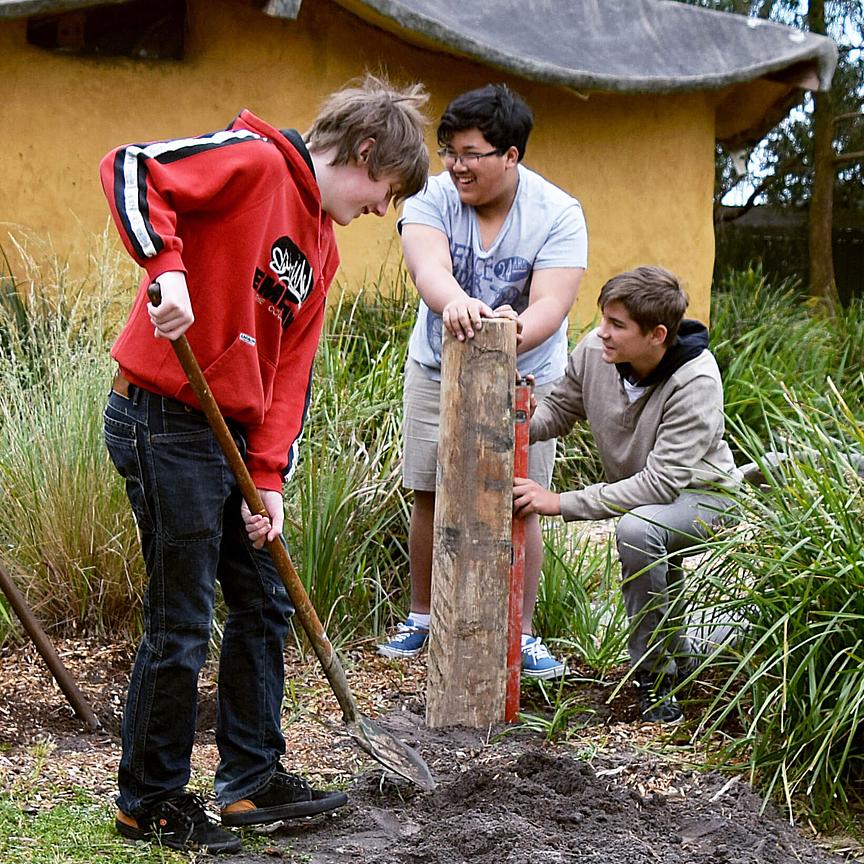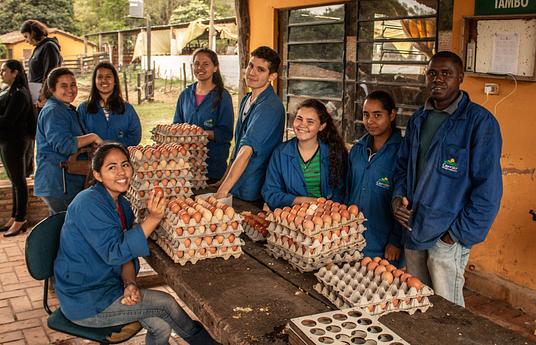Traditional schooling does not always allow the flexibility to caterfor every young person’s talents and interests. It can be easy for those who do not fit neatly into the system to become disillusioned and disengaged. Students who do not feel they have control over their education are likely to have low levels of self-determined motivationand this can cause them to dropout of school early. Sadly, students who do not engage with school are often labelled as ‘problem’ students and can end up being excluded from classes. Early school dropout can impact negatively on young people’s future opportunitiesin life and denies them the chance to explore their full potential.
The Hands On Learning programme, which recently merged with Save the Children, was developed to re-engagedisengaged studentswith meaningful, real-world projects. A small group of students work collaboratively for a full day each week on projects such as building a mud hut in the school grounds, creating a playground for a local women’s refuge, constructing decks orbridges, and a range of other hands-on tasks. Students engage in creative, meaningful projects and are able to give back to their community. This changes the way they think about themselves, boosts their self-esteem and shapes how they relate to school, as well as giving them a chance to explore new skills and hidden talents.
The project aims to meet the needs of the young people in a holistic way. Many of the young people involved have a challenging family livesand this can impact on their engagement at school. The programme ensures that basic needs, such as having breakfast in the morning, are met. It also supports the students’ emotional wellbeing by providing adults, in the form of expert artisans, who are not traditional ‘teacher’ figures and who have the time and space to listen, advise and nurture a trusting relationship. The programme is supported by Focus Plans, which facilitate reflection and target specific areas of student behaviour, enabling students to make important connections between their success in Hands On Learning and their overall education outcomes.
Focus Plans are developed and measured with students' input each morning and afternoon to identify the main issues that they will face that day and plan how they intend to approach them. Crucially, the artisan teachers do the same and this helps to build relationships, model responsibility and show that self-development is a life-long process.
Students are organised into small cross-age groups of 10 who meet for a full day each week. Groups comprise students who have come to the programme for a range of reasons, such as low attendance, challenging behaviours or kinaesthetic learners who don’t often have their needs met in the classroom. Having a mix of ages and backgrounds and ensuring that the Hands On Learning takes place mostly on site means that the students are less likely to be labelled and stereotyped. Spending a whole day each week as a small group helps to build a strong sense of community, so the students feel they have a place they belong and people to belong to. The students cook and eat together to further their sense of community and trust. Importantly, the length of time students participate in Hands On Learning is not prescriptive, allowing students to remain in the programme as long as it is beneficial to their educational journey.
Parents are encouraged to engage with the process and are invited to attend family evenings where they see the work their children are doing, give feedback and encouragement and perhaps share a meal.




